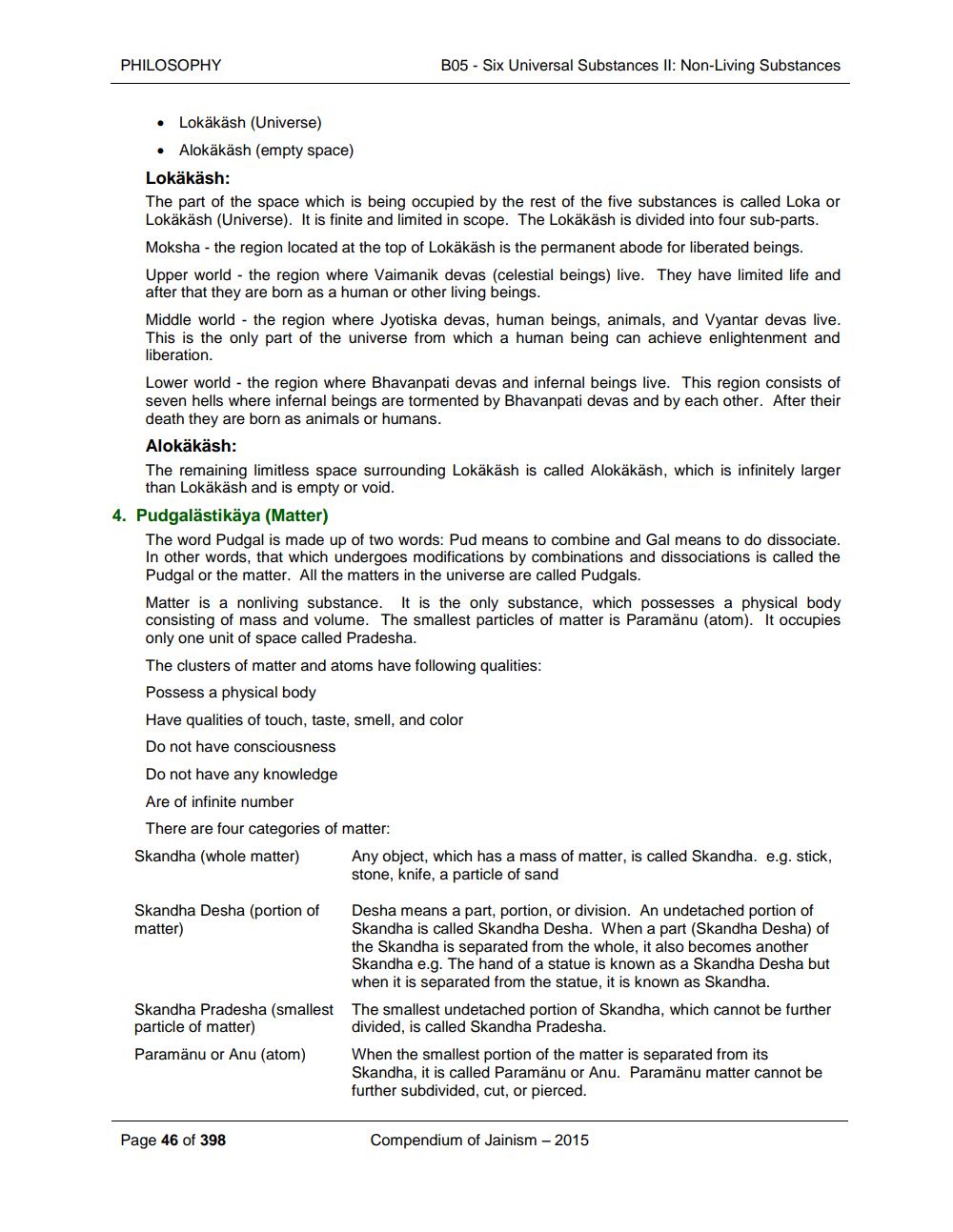________________
PHILOSOPHY
B05 - Six Universal Substances II: Non-Living Substances
• Lokäkäsh (Universe) • Alokäkäsh (empty space) Lokäkäsh: The part of the space which is being occupied by the rest of the five substances is called Loka or Lokäkäsh (Universe). It is finite and limited in scope. The Lokäkäsh is divided into four sub-parts. Moksha - the region located at the top of Lokäkäsh is the permanent abode for liberated beings. Upper world - the region where Vaimanik devas (celestial beings) live. They have limited life and after that they are born as a human or other living beings. Middle world - the region where Jyotiska devas, human beings, animals, and Vyantar devas live. This is the only part of the universe from which a human being can achieve enlightenment and liberation. Lower world - the region where Bhavanpati devas and infernal beings live. This region consists of seven hells where infernal beings are tormented by Bhavanpati devas and by each other. After their death they are born as animals or humans. Alokäkäsh: The remaining limitless space surrounding Lokäkäsh is called Alokäkäsh, which is infinitely larger
than Lokäkäsh and is empty or void. 4. Pudgalästikäya (Matter)
The word Pudgal is made up of two words: Pud means to combine and Gal means to do dissociate. In other words, that which undergoes modifications by combinations and dissociations is called the Pudgal or the matter. All the matters in the universe are called Pudgals. Matter is a nonliving substance. It is the only substance, which possesses a physical body consisting of mass and volume. The smallest particles of matter is Paramänu (atom). It occupies only one unit of space called Pradesha. The clusters of matter and atoms have following qualities: Possess a physical body Have qualities of touch, taste, smell, and color Do not have consciousness Do not have any knowledge Are of infinite number There are four categories of matter: Skandha (whole matter) Any object, which has a mass of matter, is called Skandha. e.g. stick,
stone, knife, a particle of sand
Skandha Desha (portion of matter)
Skandha Pradesha (smallest particle of matter) Paramänu or Anu (atom)
Desha means a part, portion, or division. An undetached portion of Skandha is called Skandha Desha. When a part (Skandha Desha) of the Skandha is separated from the whole, it also becomes another Skandha e.g. The hand of a statue is known as a Skandha Desha but when it is separated from the statue, it is known as Skandha. The smallest undetached portion of Skandha, which cannot be further divided, is called Skandha Pradesha. When the smallest portion of the matter is separated from its Skandha, it is called Paramänu or Anu. Paramänu matter cannot be further subdivided, cut, or pierced.
Page 46 of 398
Compendium of Jainism - 2015




